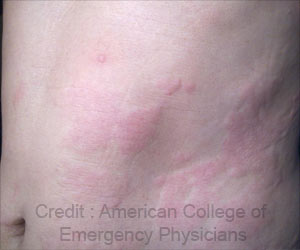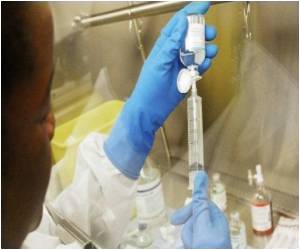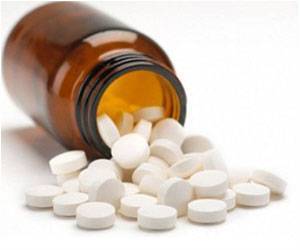ccf-DNA activates the cGAS/STING pathway, driving inflammation in anti-NXP2 antibody-positive dermatomyositis patients.
- Elevated ccf-DNA levels correlate with severe muscle disease in dermatomyositis (DM)
- The cGAS/STING pathway is key in inflammation, especially in patients with PFA
- Targeting this pathway may offer new therapeutic options for DM
Circulating Cell-Free DNA Promotes Inflammation in Patients with Dermatomyositis with Anti-NXP2 Antibodies via the cGAS/STING Pathway
Go to source). Let's explore the role of ccf-DNA in promoting inflammation in patients with anti-NXP2 antibody-positive DM and the potential implications for disease management.
Cell-free DNA was once considered mere cellular debris, but now it's seen as a potent trigger of inflammation in autoimmune diseases! Your DNA may be doing more than just carrying genetic information—it could be a key player in immune system misfires! #autoimmunedisease #medindia’
Role of ccf-DNA in Autoimmune Diseases
In autoimmune diseases, the immune system mistakenly attacks the body's own cells, leading to inflammation and tissue damage. ccf-DNA, which is released from damaged or dying cells, is known to play a significant role in this process. When ccf-DNA is released into the bloodstream, it can be recognized by the immune system as a danger signal. This recognition is mediated by the cGAS/STING pathway, a key sensor of cytosolic DNA. Upon activation, this pathway triggers the production of IFN-I, a potent mediator of the immune response.In the context of DM, the presence of anti-NXP2 antibodies exacerbates the disease's severity. These antibodies target nuclear matrix protein 2, a component of the cell's structural framework, leading to further muscle damage and inflammation. The release of ccf-DNA from damaged muscle cells could, therefore, contribute to the activation of the cGAS/STING pathway, further driving the inflammatory process.
To investigate the role of ccf-DNA in anti-NXP2 antibody-positive DM, researchers measured serum ccf-DNA levels and analyzed their correlation with clinicopathological indicators. RNA sequencing, immunofluorescence, western blotting, and RT–qPCR were performed on skeletal muscle samples to assess the activation of the cGAS/STING pathway and the expression of related genes. Additionally, the effect of patient serum on p-STING expression in C2C12 cells, a model of skeletal muscle cells, was evaluated in vitro.
Link Between ccf-DNA, Disease Activity, and Inflammatory Pathways in Dermatomyositis
Correlation Between ccf-DNA and Disease Activity
The study found that increased levels of ccf-DNA in the serum were positively correlated with MYOACT scores, a measure of muscle disease severity, in patients with anti-NXP2 antibody-positive DM. This suggests that ccf-DNA could serve as a potential biomarker for monitoring disease activity in these patients.
Activation of the cGAS/STING Pathway in Skeletal Muscle
RNA sequencing and immunofluorescence analysis revealed upregulation of the cytosolic DNA-sensing pathway in skeletal muscle from patients with anti-NXP2 antibody-positive DM. Specifically, increased cytosolic double-stranded DNA (dsDNA) was found to colocalize with cGAS, indicating that ccf-DNA is recognized by the cGAS/STING pathway in these patients.
Association with Perifascicular Atrophy (PFA)
Western blot analysis showed that activation of the cGAS/STING pathway was particularly pronounced in patients with perifascicular atrophy (PFA), a hallmark of severe muscle damage in DM. In contrast, patients without PFA did not show significant activation of this pathway, although IFN-I scores were elevated in both groups. This finding suggests that the cGAS/STING pathway may contribute to the development of PFA and its associated muscle damage.
In Vitro Analysis of p-STING Expression
In vitro experiments using C2C12 cells demonstrated that sera from patients with PFA increased the expression of p-STING, a phosphorylated form of STING that indicates pathway activation. Treatment with DNase I, an enzyme that degrades DNA, and a STING inhibitor effectively reduced p-STING expression, further supporting the role of ccf-DNA in activating the cGAS/STING pathway.
ccf-DNA as a Potential Biomarker and Therapeutic Target in Dermatomyositis
The findings of this study highlight the pathogenic role of ccf-DNA in promoting inflammation and muscle damage in patients with anti-NXP2 antibody-positive DM. The activation of the cGAS/STING pathway by ccf-DNA not only contributes to IFN-I production but also appears to be associated with severe muscle disease, as evidenced by the presence of PFA.Given these insights, ccf-DNA levels could potentially be used as biomarkers for monitoring disease activity and guiding treatment decisions in DM patients. Furthermore, targeting the cGAS/STING pathway may represent a novel therapeutic strategy for reducing inflammation and preventing muscle damage in these patients.
Expanding Research on the cGAS/STING Pathway and ccf-DNA in Autoimmune Diseases
While this study provides compelling evidence for the role of ccf-DNA in DM pathogenesis, further research is needed to explore the therapeutic potential of targeting the cGAS/STING pathway. Clinical trials investigating the efficacy of STING inhibitors or DNase I treatment in reducing muscle inflammation and improving patient outcomes could pave the way for new treatments in DM.Moreover, understanding the broader implications of ccf-DNA and the cGAS/STING pathway in other autoimmune diseases could lead to more effective and personalized approaches to managing these conditions. As research continues to unravel the complex mechanisms underlying autoimmune diseases like DM, the hope is that patients will benefit from more targeted and effective therapies in the near future.
Reference:
- Circulating Cell-Free DNA Promotes Inflammation in Patients with Dermatomyositis with Anti-NXP2 Antibodies via the cGAS/STING Pathway - (https://academic.oup.com/rheumatology/advance-article-abstract/doi/10.1093/rheumatology/keae425/7729142?redirectedFrom=fulltext)
















